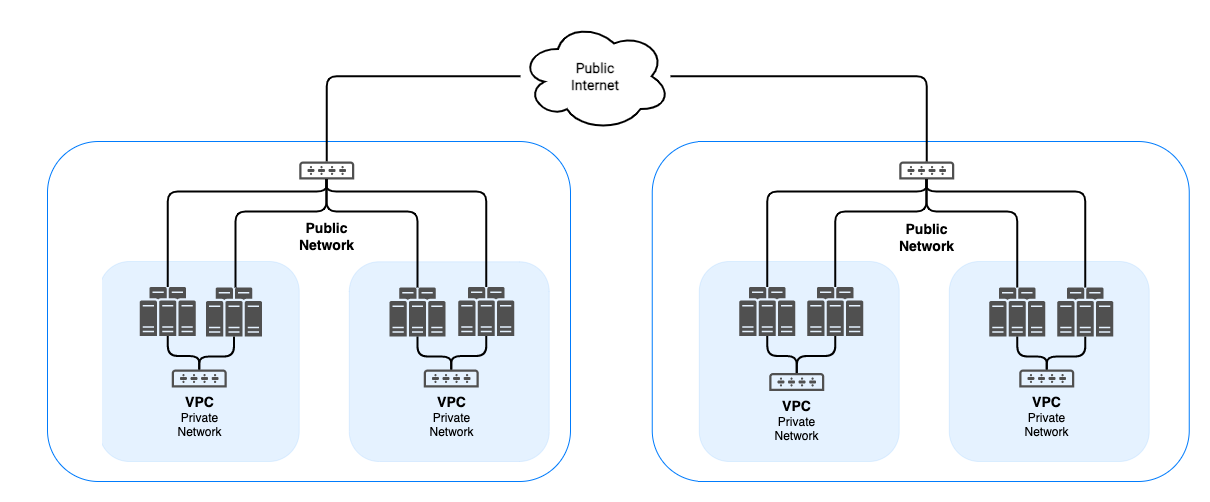Securely Connect Remote IoT P2P SSH Ubuntu: A Comprehensive Guide
Connecting remote IoT devices through P2P SSH on Ubuntu is an essential skill for modern developers and system administrators. As the Internet of Things (IoT) continues to expand, ensuring secure communication between devices becomes increasingly important. This article will explore how to securely connect remote IoT devices using peer-to-peer (P2P) SSH on Ubuntu, providing practical tips and expert insights.
Whether you're managing smart home systems, industrial automation, or any IoT-based application, securing your network is non-negotiable. This guide aims to equip you with the knowledge and tools to protect your IoT ecosystem while maintaining efficient communication.
By the end of this article, you'll understand the importance of SSH in IoT security, how to set up P2P SSH tunnels on Ubuntu, and best practices for maintaining a secure IoT network. Let's dive in!
Read also:Movie Rulz Your Ultimate Destination For Streaming Movies
Table of Contents
- Introduction to IoT and SSH
- Why Secure IoT Connections Matter
- Setting Up SSH on Ubuntu
Establishing P2P SSH Connections
- Securing IoT Devices with SSH
- Best Practices for Secure IoT P2P SSH
Troubleshooting Common Issues
- Case Studies: Real-World Applications
- Future Trends in IoT Security
- Conclusion and Next Steps
Introduction to IoT and SSH
The Internet of Things (IoT) has revolutionized how we interact with technology, enabling devices to communicate and exchange data seamlessly. However, with this connectivity comes the challenge of ensuring secure communication. SSH (Secure Shell) is a protocol widely used to secure network services over an unsecured network. For IoT devices running on Ubuntu, SSH provides a robust framework for remote access and management.
SSH ensures that data transmitted between devices is encrypted, protecting it from unauthorized access. This is particularly crucial for IoT applications where sensitive information is often exchanged. By leveraging SSH, administrators can securely connect remote IoT devices, monitor their performance, and update their configurations without compromising security.
Understanding the basics of SSH and its application in IoT is the first step toward building a secure and efficient IoT network. This section will explore the fundamentals of SSH and its role in IoT security.
Why Secure IoT Connections Matter
IoT devices are increasingly integrated into critical infrastructure, from healthcare systems to smart cities. A single breach in an IoT network can lead to catastrophic consequences, including data theft, system downtime, and even physical harm. Securely connecting remote IoT devices using P2P SSH on Ubuntu is not just a best practice—it's a necessity.
SSH offers several advantages for IoT security, including:
- Encryption of data in transit
- Authentication of devices and users
- Protection against man-in-the-middle attacks
By prioritizing security in IoT deployments, organizations can protect sensitive data, maintain system integrity, and ensure compliance with regulatory standards. This section will delve deeper into the importance of secure IoT connections and the potential risks of neglecting them.
Read also:Batch Job Iot Device Revolutionizing Data Management In The Internet Of Things
Setting Up SSH on Ubuntu
Ubuntu is one of the most popular Linux distributions for IoT applications due to its stability, security, and extensive community support. Setting up SSH on Ubuntu is a straightforward process that involves installing the OpenSSH server and configuring it for secure communication.
To install OpenSSH on Ubuntu, open the terminal and run the following command:
sudo apt update && sudo apt install openssh-server
Once installed, verify that the SSH service is running by checking its status:
sudo systemctl status ssh
This section will guide you through the installation and configuration of SSH on Ubuntu, ensuring your IoT devices are ready for secure remote connections.
Establishing P2P SSH Connections
Configuring SSH Keys
Using SSH keys for authentication is a secure alternative to password-based authentication. SSH keys consist of a public key and a private key. The public key is placed on the server, while the private key is kept secure on the client device.
To generate SSH keys on Ubuntu, use the following command:
ssh-keygen -t rsa -b 4096
After generating the keys, copy the public key to the remote IoT device:
ssh-copy-id user@remote_device_ip
By configuring SSH keys, you eliminate the need for passwords, reducing the risk of brute-force attacks and unauthorized access.
Port Forwarding for SSH
Port forwarding is a technique used to redirect network traffic from one port to another. In the context of IoT P2P SSH connections, port forwarding allows devices behind firewalls or NATs to communicate securely.
To set up port forwarding for SSH, modify the SSH configuration file:
sudo nano /etc/ssh/sshd_config
Ensure the following settings are enabled:
- Port 22
- PermitRootLogin no
- PubkeyAuthentication yes
Restart the SSH service after making changes:
sudo systemctl restart ssh
This section will provide detailed instructions on configuring port forwarding for SSH, enabling seamless communication between IoT devices.
Securing IoT Devices with SSH
While SSH provides a strong foundation for secure communication, additional measures are necessary to protect IoT devices from potential threats. Implementing firewalls, updating software regularly, and monitoring network activity are critical components of IoT security.
For Ubuntu-based IoT devices, the Uncomplicated Firewall (UFW) is an effective tool for managing firewall rules. To enable UFW and allow SSH traffic:
sudo ufw allow ssh
sudo ufw enable
Regularly updating the operating system and installed packages ensures that security vulnerabilities are patched promptly:
sudo apt update && sudo apt upgrade
This section will explore advanced techniques for securing IoT devices, ensuring your network remains protected against evolving threats.
Best Practices for Secure IoT P2P SSH
Adhering to best practices is essential for maintaining a secure IoT network. Here are some key recommendations:
- Use strong, unique passwords for all accounts
- Limit SSH access to trusted IP addresses
- Monitor login attempts and block suspicious activity
- Regularly audit SSH configurations and permissions
By following these guidelines, you can minimize the risk of security breaches and ensure the reliability of your IoT network. This section will provide actionable tips for implementing best practices in your IoT deployments.
Troubleshooting Common Issues
Connection Failures
Connection failures are a common issue when setting up SSH for IoT devices. Troubleshooting steps include:
- Verifying the IP address and port number
- Checking firewall rules and port forwarding settings
- Ensuring SSH service is running on both devices
Performance Issues
Performance issues can arise due to network congestion, outdated software, or misconfigured settings. To optimize SSH performance:
- Use compression to reduce data transfer size
- Upgrade the network infrastructure if necessary
- Monitor system resources and adjust settings accordingly
This section will guide you through diagnosing and resolving common issues, ensuring smooth operation of your IoT network.
Case Studies: Real-World Applications
Real-world applications of securely connecting remote IoT devices using P2P SSH on Ubuntu demonstrate the practical benefits of this approach. For example, a smart agriculture system uses SSH to monitor soil moisture levels and control irrigation systems remotely. By leveraging SSH, farmers can optimize water usage and improve crop yields.
Another case study involves a smart home security system that uses SSH to transmit video feeds from security cameras to a central server. This ensures that sensitive footage is encrypted and protected from unauthorized access.
This section will present case studies that highlight the effectiveness of SSH in IoT applications, providing inspiration for your own projects.
Future Trends in IoT Security
The future of IoT security lies in advancements such as quantum-resistant cryptography, artificial intelligence-driven threat detection, and decentralized authentication systems. As IoT devices become more integrated into everyday life, the demand for robust security solutions will continue to grow.
Staying informed about emerging trends and technologies is crucial for maintaining a secure IoT network. This section will explore the latest developments in IoT security and their potential impact on future deployments.
Conclusion and Next Steps
Securing remote IoT devices using P2P SSH on Ubuntu is a vital component of modern IoT deployments. By following the guidelines outlined in this article, you can ensure your network remains protected against potential threats while maintaining efficient communication between devices.
We encourage you to take the following steps:
- Review and implement the best practices discussed in this article
- Explore additional resources for enhancing IoT security
- Share your experiences and insights in the comments section below
Thank you for reading! If you found this article helpful, please consider sharing it with your network or exploring other articles on our site. Together, we can build a safer and more connected world.
Article Recommendations


